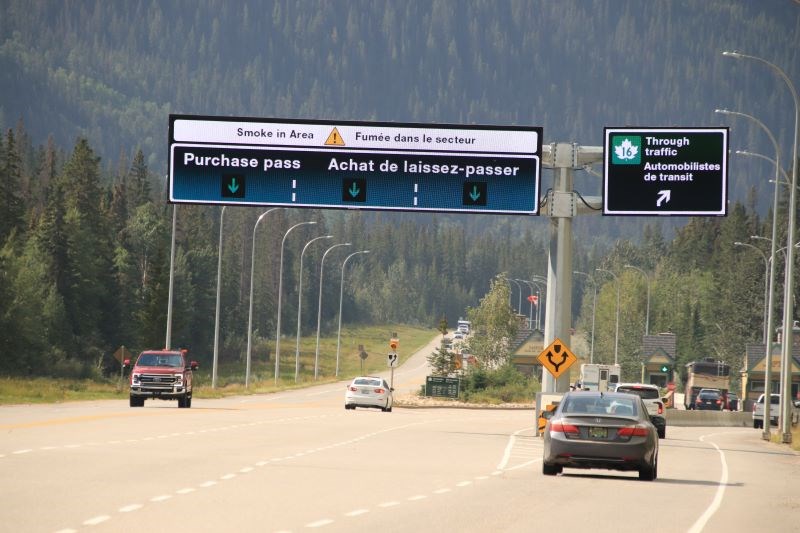Scott Hayes, Local Journalism Initiative Reporter | [email protected]
Residents are advised to take precautions due to the smoke coming from the Chetamon wildfire, which continues to impact areas north of Jasper and along Highway 16.
Environment and Climate Change Canada (ECCC) released a special air quality statement that continued through the early part of this week.
“Widespread smoke from wildfires in British Columbia and the northwestern United States continues to affect Jasper National Park,”
“In addition, local smoke from the Chetamon wildfire is expected to continue impacting areas north of the town of Jasper, including Yellowhead Highway 16.”
The advisory also noted that air quality and visibility due to wildfire smoke can fluctuate over short distances and can vary considerably from hour to hour.
Parks Canada and the RCMP are prepared to use traffic control on Highway 16 if needed, and motorists should check 511 Alberta for up-to-date road conditions.
Temperatures in the first part of the week saw low to mid-20s with a variable chance of precipitation. There was a risk of a thunderstorm on Tuesday.
Alberta Environment and Parks and Alberta Health Services say in a notice the smoke may contribute to people experiencing symptoms such as increased coughing, throat irritation, headaches or shortness of breath.
“As we look at wildfires and floods, fires and fires, in general, there's a lot of really fine particulate matter,” said Dr. Kathryn Koliaska, Medical Officer of Health for the North Zone of Alberta Health Services.
“That's what actually causes the haze that you see. But then there's also gases that also can travel with that particulate mixed in as well – carbon dioxide, carbon monoxide and a bunch of other nitrogen, sulfur and other compounds.”
She encouraged people to pay heed to the air quality health index for a more accurate assessment of changing air quality. While the ECCC does not have that monitoring for Jasper specifically, there are other sources on the internet such as
People who will be especially at risk include children and seniors. That group also includes those with cardiovascular or lung disease who can be particularly sensitive to any air pollution including vehicle and generator exhaust.
“[The air quality health index] encompasses a calculation of all of the different substances – generators are burning hydrocarbons rather than the wildfire burning trees, et cetera – but its combustion products are relatively similar, other than maybe incompletely burned hydrocarbons,” Koliaska said.
These people at higher risk will generally experience more serious health effects at lower levels. Pollution can aggravate their diseases, leading to increased medication use and medical visits, and emergency services. Koliaska said all people can be affected by smoke.
Tips to reduce the risk of smoke exposure include closing and locking windows and doors, closing fireplace dampers, not smoking and not having fires either in outdoor firepits or in fireplaces inside.
Individuals experiencing symptoms can call Health Link at 811 to speak to a registered nurse.
More information can be found at
Check and from Environment Canada.
Editor's note: This story was updated at 11:20 a.m. on Tuesday, Sept. 13.




